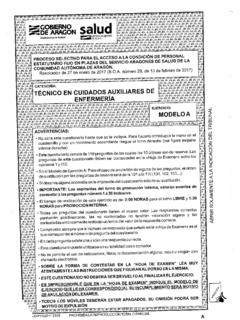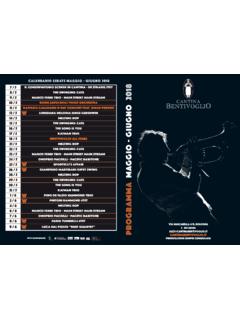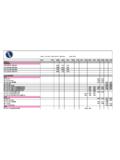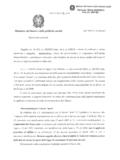Transcription of Credit Event Auction Primer - Credit Fixings
1 1 Credit Event Auction Primer This Primer is provided for informational purposes only. Each Auction is governed by the Auction Settlement Terms posted on For any questions about this Primer , please contact either or Note: This Primer was updated in Feb 2010 to reflect recent changes which are now permanent regarding the carrying over of touching/crossing markets from the initial submissions to the limit orders. Introduction The Credit markets have experienced a wave of continuous global innovation since the advent of Credit default swaps. Indeed, single-name Credit default swaps have continually been improving to make the product as useful and liquid as the market can make them. One of the key innovations over the past few years is the advent of a new settlement mechanism for Credit default swaps to replace the traditional physical settlement.
2 This document examines the motivations for the market to develop and use Credit Event auctions, and details the Auction process. Why Credit Event Auctions? When Credit default swaps (CDS) were first developed, the intended use was to hedge cash debt positions with the derivative. With that in mind, the settlement method developed to settle Credit events was what is known as physical settlement . After a default, the protection buyer delivers the defaulted asset and receives in return the due amount outstanding from the defaulted entity. As time passed, CDS became the tool of choice to take a view on Credit . This was facilitated by derivatives trading not being limited by supply (all you need is a willing counterparty) and market standardization - instead of having to pick from hundreds of Ford bonds, you had one CDS curve traded across the market.
3 As the CDS market developed into a primary indicator of an entity s creditworthiness, default swaps evolved from being a hedging tool to the primary Credit trading tool. As a result, at some point early this decade, the volume of CDS trades began to outstrip the volume of bonds outstanding - there were more CDS traded on a Credit than the outstanding bond issuance of that Credit . For investors with only the derivative position, physical settlement is not appealing. Protection buyers would have to go to the open market to source bonds, and protection sellers would be left with cash positions after the Auction . This is particularly undesirable for those holding index and/or index tranche positions, where the notional for a given Credit might be quite small (a $100m position in CDX HY corresponds to $1m per Credit ), and they are unlikely to hold a cash position in the defaulted entity.
4 Furthermore, with the CDS outstanding greater by multiples than the volume of bonds issued, the bonds would have to be recycled a number of times through the market to settle all the CDS trades. Investors recognizing this would rush to source bonds, artificially raising the price of the bonds higher than the expected recovery value, and increasing the volatility of the bonds post-default, which is undesirable for a number of reasons. 2 Cash settlement was widely regarded to be the best alternative, but unlike the basic mechanism already in place for CDS contracts, a mechanism was required to set a transparent, trustworthy price the whole market could use. The answer the market came up with was Credit Event auctions.
5 The initial auctions were based on a mechanism developed by the Auction administrators Markit and Creditex - and dealers in Europe to fix a weekly price for the 3 main iTraxx indices in Europe. These auctions involved only cash settlement. After Delphi filed for bankruptcy, the process was extended to incorporate the trading of bonds so that everyone was physically settling, but only on their net open position, thereby vastly reducing the amount of bond trades required to settle the CDS trades. The process has been further developed to what it is today an open, transparent process which gives everyone the opportunity to participate, and which allows investors the option to cash or effectively physically settle.
6 Another benefit of the Auction is the setting of a market-wide price. The use of the same price to settle all trades across the market eliminates basis risk for investors. For example an investor with hedged positions, index vs single-name, or tranche vs index, may have physically settled at different times, and sourced/sold bonds at different times to settle their trades (admittedly if they settled their shorts first they could just deliver the bonds they received here into their long protection trades). Particularly with the heightened volatility post a default due to investors scrambling to buy bonds, they may have traded bonds at different prices and settled their Credit derivative trades at different levels.
7 This would have changed the economics of their position, even though the investor was flat and theoretically not exposed to any further profit or loss. Finally, for loans the motivation to run auctions is even greater, given the complicated and involved process for settling loan trades. Cash vs. Physical Settlement in the Auction As described above, investors can choose between cash and what is effectively physical settlement in the Auction . This option is made possible by the ability to trade bonds or loans in the Auction . All of the actual CDS/LCDS trades in the Auction are cash settled. The physical settlement segment is made up by trading the underlying cash obligation so that the net payment to a protection buyer adds up to par (note the term par in this document refers not to the face value, but the actual principal balance outstanding for the bonds/loans in question), and they also get the equivalent par amount of obligations off of their books.
8 As an example, consider a $10m long protection investor. Assuming a 40% recovery rate, they would be compensated 60% of par ($6m in this case), and sell $10m par of bonds/loans. As the bond/loan trades in the auctions take place at the final price, they receive $4m for the bonds/loans, in total receiving $10m, and pass off $10m par of bonds/loans to a buyer in the Auction . Protection sellers would make requests to buy bonds/loans in the Auction (as normally they would be delivered bonds/loans in physical settlement). Investors wishing to cash settle do not make a physical settlement request and simply cash settle their trade. 3 Hence, the investor s net position after Auction settlement is the same as their position after physical settlement.
9 The documentation for the auctions actually ties these together to legally associate physical settlement request trades with the derivative trades such that the two transactions are legally one transaction. Note physical settlement requests are constrained by the investor s derivative position the request an investor can make is between zero and the amount of bonds/loans they would trade to fully physical settle their position. As an example a $10m long protection buyer can only submit a sell request between 0 and $10m face value of underlying. They cannot make a buy request as they would never be delivered bonds to settle their trade. The Auction Process The Auction is comprised of 2 parts. Here the first part is examined.
10 The inputs into the first part of the Auction are: a) A 2-way market supplied by dealers for the defaulted assets, of a pre-defined maximum spread, and with a pre-defined quotation size associated with it. The spread and quotation sizes are subject to specification prior to each Auction and may vary for each Auction depending on the liquidity of the defaulted assets. b) Physical Settlement Requests. These are the requests to buy or sell bonds/loans (at the final price), which as described when combined with the cash settlement of their CDS/LCDS trade adds up to be equivalent to physical settlement. The dealer markets submitted are used to create an initial market midpoint (IMM) which is used as described below in the second half of the Auction to constrain the final price.




